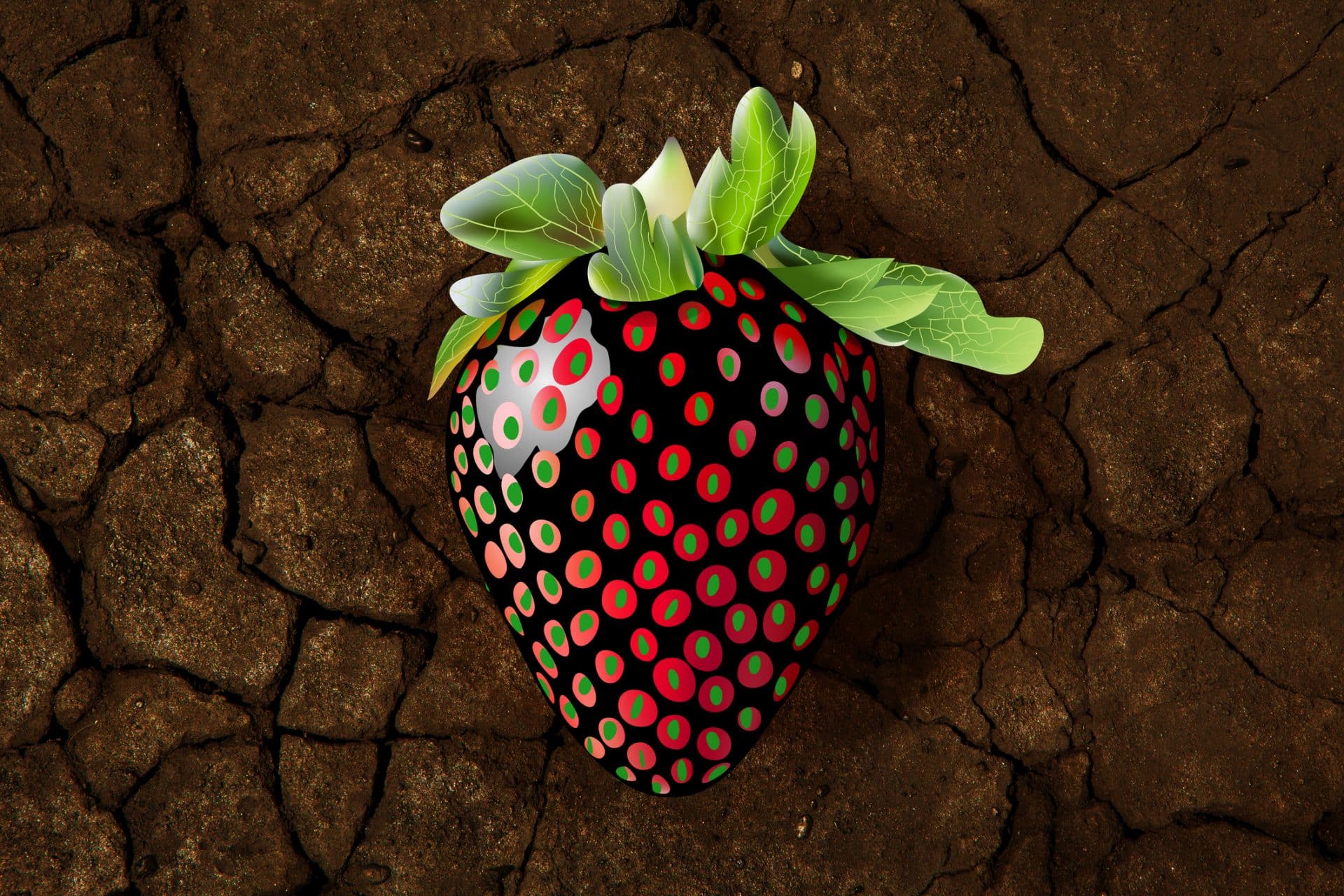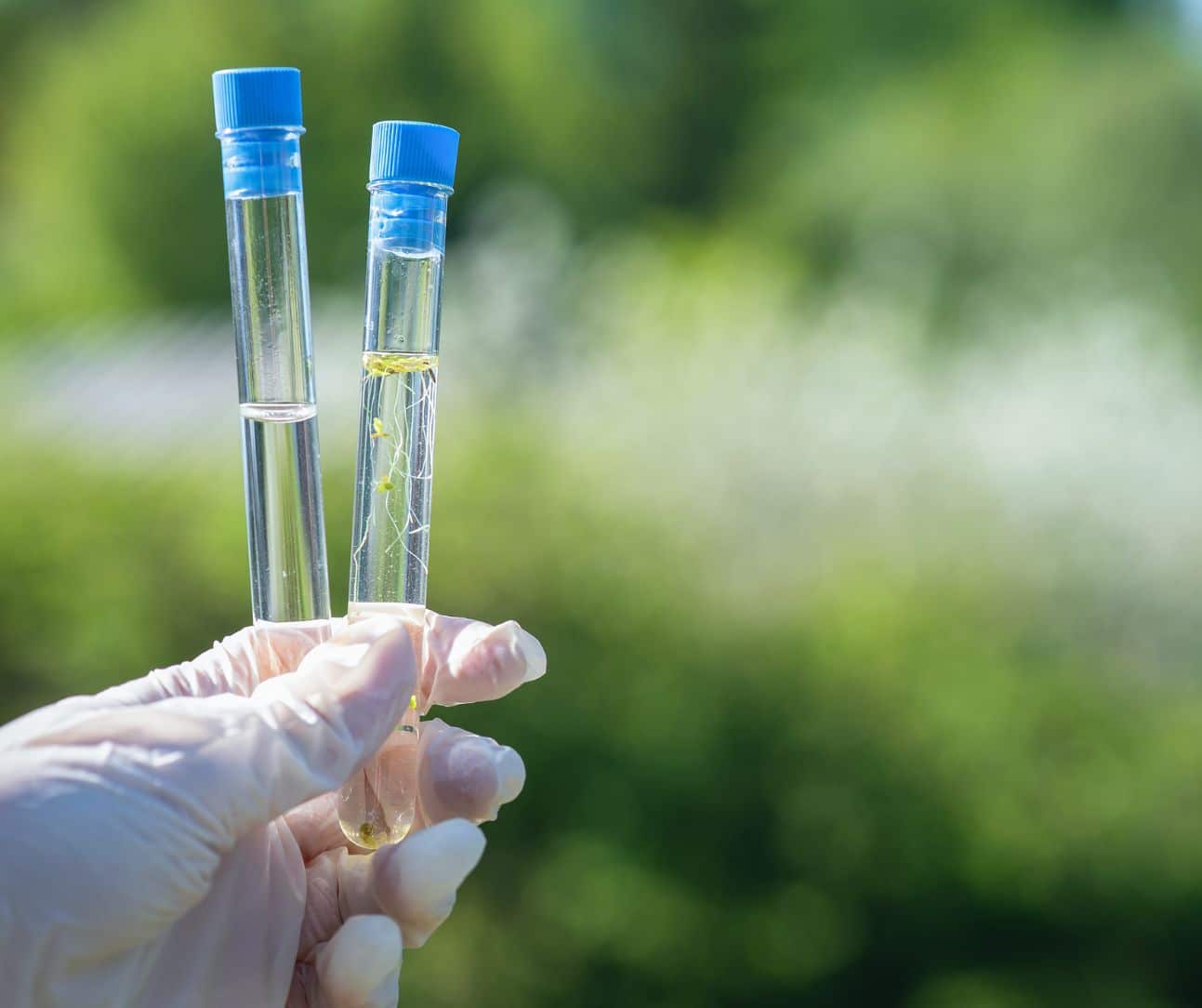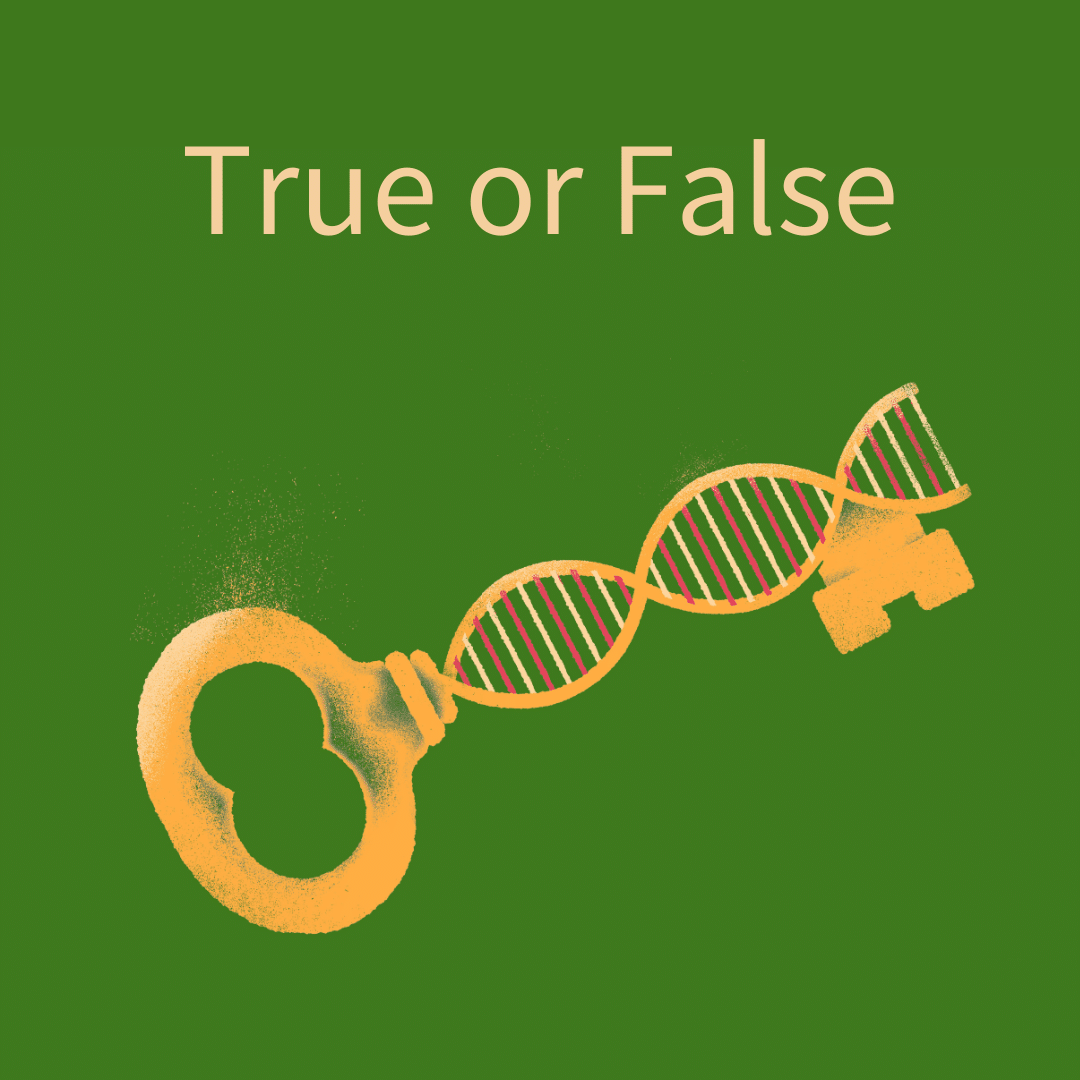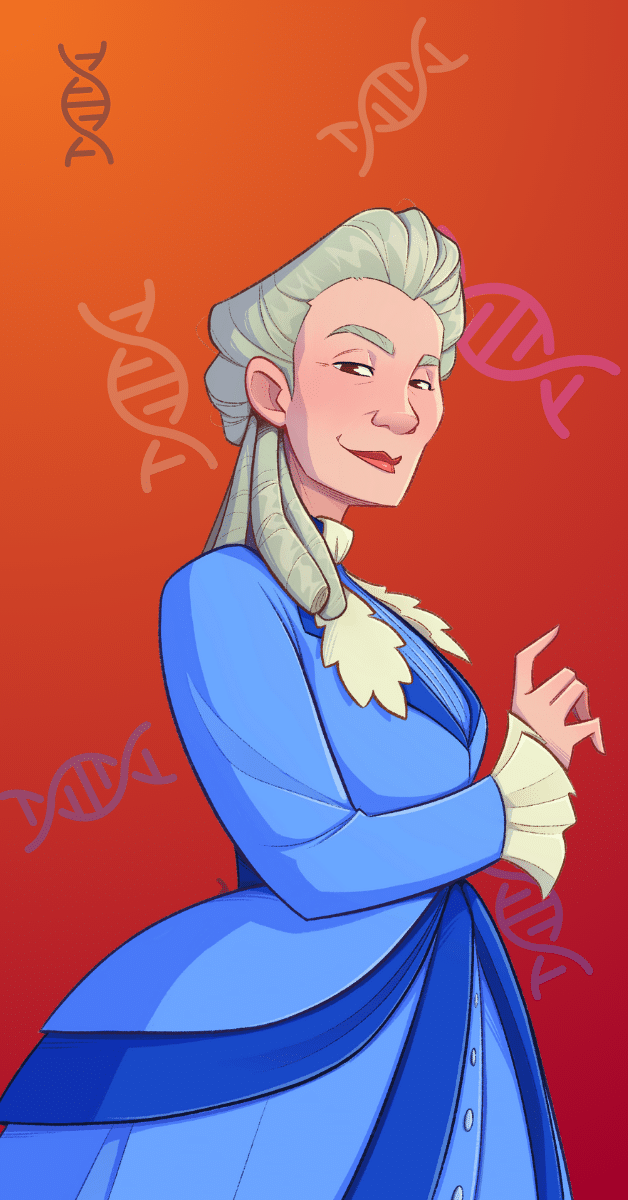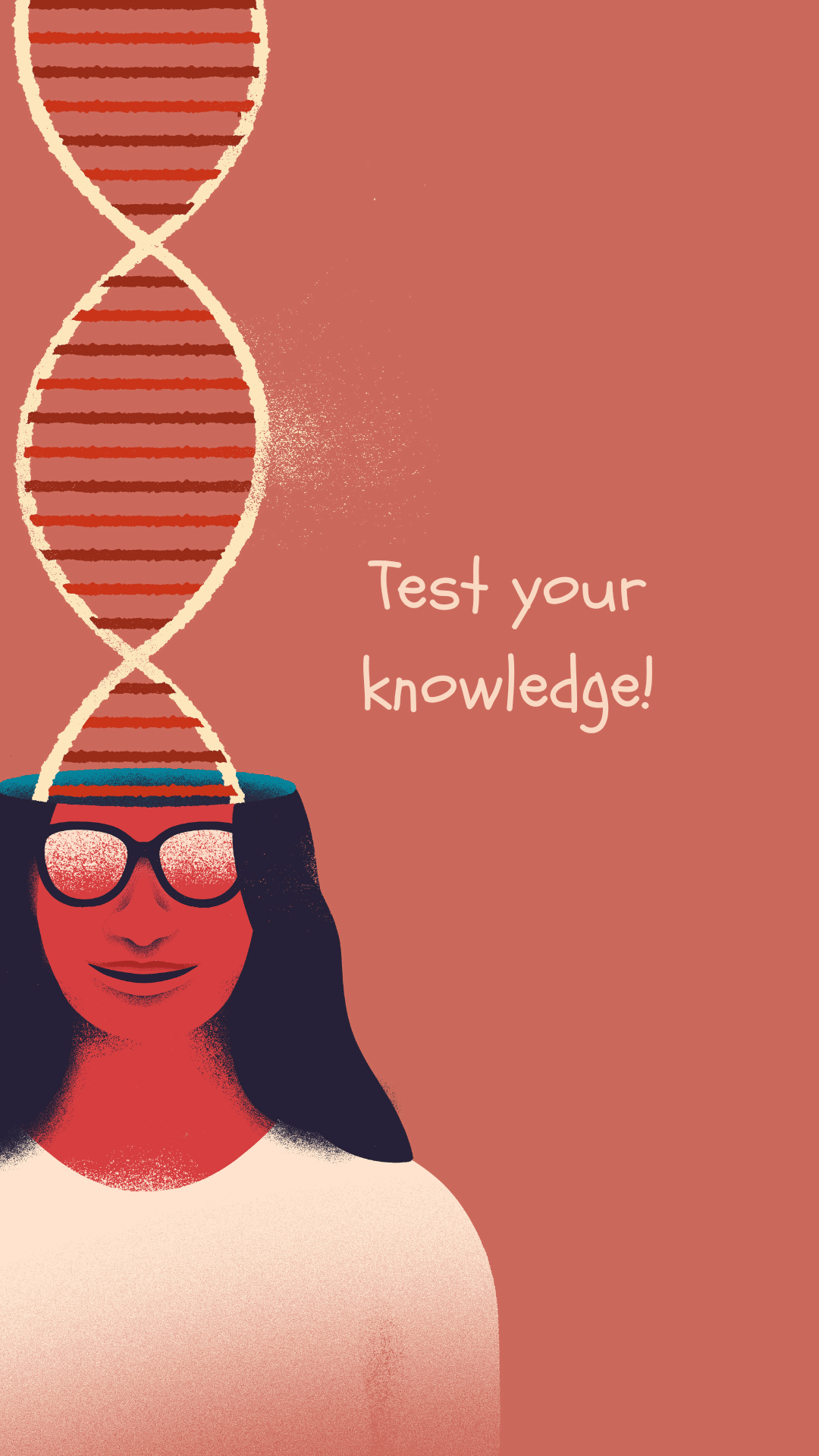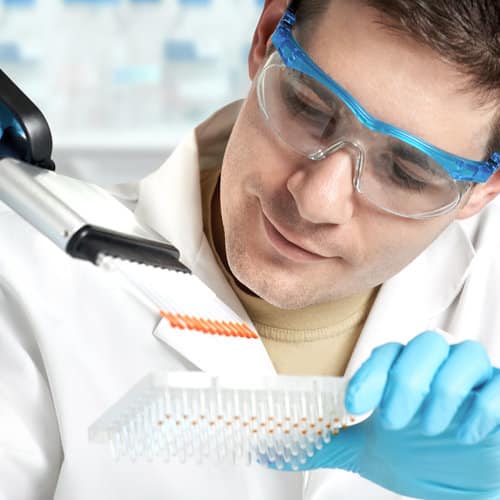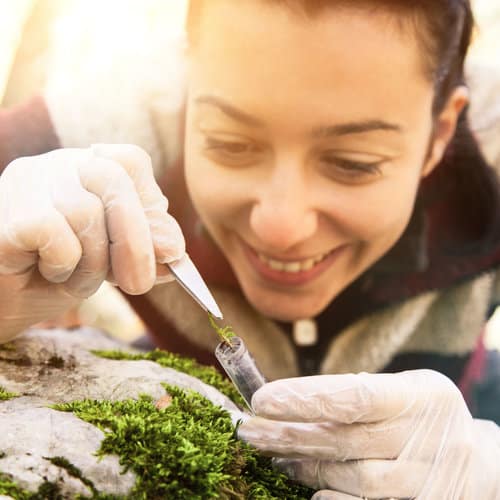Heredity: The basics
“It isn’t my fault if I have a bad temper—I got it from my parents!”
Heredity is the passing on of characteristics from one generation to the next.
These characteristics are determined by the two sets of genes we inherit from our two biological parents—one from each. If both copies are identical, we are said to be homozygous for that gene. If we have two different copies, we are heterozygous for that gene.
Alleles: The palette of your genetic makeup
There can be many variants of the same gene. These are called alleles. Alleles can be influenced by multiple factors:
- Other alleles
- The environment
The two alleles in a cell can influence each other through a relationship of dominance and recessiveness. If an individual has one dominant allele and one recessive allele, the dominant allele will be expressed, which means it will become the observed trait. A recessive allele will only be expressed in the absence of a dominant allele.
The environment inside and outside the cell can also influence alleles without changing their sequence. Factors such as the cell’s location in the body, pollution and stress can increase or decrease the expression of a gene.
Genotype as the script, phenotype as the performance
- Genotype refers to an individual’s full set of genes.
- Each gene is written as two letters that indicate its two alleles: An uppercase letter indicates a dominant allele and a lowercase letter indicates a recessive allele.
- Phenotype refers to an individual’s observed characteristics.
- These traits can include shape, size, colour, segments and functions.
For this plant:

- The phenotype of its flower colour is purple.
- The genotype of its flower colour is VV or Vv.
Mendelian genetics:
The father of genetics is a 19th-century Austrian monk named Gregor Mendel. His experiments with pea plants established what is now known as Mendelian genetics. His discoveries led to an understanding of the foundations of heredity.
He also formulated three laws that describe how characteristics are passed on.
Mendel also observed that some traits are dominant while others are recessive. If an individual has two different versions of a gene (called alleles), only one version—the dominant one—will be expressed.
Mendel observed that genes for different traits are inherited independently of one another.
*Important! Mendelian genetics does not describe the full complexity of the relationships between genes and traits. Gregor Mendel thought that each trait is influenced by just a single gene. We now know that multiple genes can influence the same trait (polygenic traits), that the environment affects genes (epigenetics), and that dominant and recessive alleles have a whole range of interactions (codominance). The reality of genetics is more complex than Mendel thought!
Combination
Genetic combination occurs during sexual reproduction, when the genetic material of each parent is combined and passed on to the offspring.
Each parent provides one allele, meaning that their offspring receive two alleles for each gene.
A Punnett square can predict the outcome of these genetic crosses by showing all possible allele combinations for the next generation.
Mendel crossed purple-flowered pea plants whose genotype was VV (homozygous) with white‑flowered pea plants whose genotype was vv (homozygous).
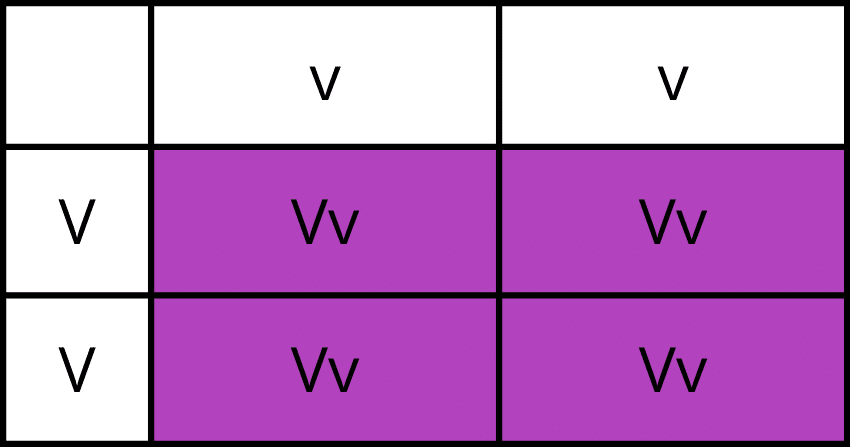
All plants in the next generation had purple flowers, even though their genotype was Vv (heterozygous). Mendel therefore observed that the purple trait was dominant.
Mendel then crossed the pea plants of this first generation (Vv) with each other.
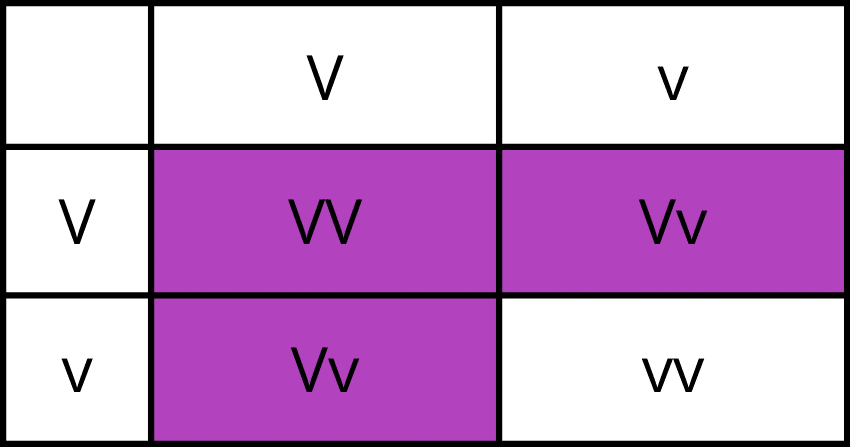
The subsequent generation included pea plants with homozygous (VV) and heterozygous (Vv) purple-flowered phenotypes and as well as pea plants with a homozygous (vv) white-flowered phenotype.
Meiosis
Sexual reproduction: Gametes on the go
The extraordinary diversity of life on our planet is closely linked to the basic yet complex process of sexual reproduction, or the fusion of two distinct sex cells called gametes, which in animals are often called ova or eggs and sperm. These gametes are produced through meiosis.
While the somatic cells of an organism usually contain all of its genetic material, gametes contain only half. Unlike somatic cells, gametes do not go through the traditional cell cycle and do not divide through mitosis.
During fertilization, two gametes fuse to form a zygote, which will then develop into a complete organism under the right conditions.
Unlike other organisms, plants can’t move around to find a reproductive partner. In flowering plants, the pollen grains, which contain male gametes, do the travelling instead.
The pollen grains that come from one flower are often carried by the wind or insects to reach the female sexual organs of other plants. The male and female gametes fuse and develop into a seed that later grows into a new plant.
This process fosters genetic diversity in their offspring and helps plant species adapt and survive in changing environments.
Stages of meiosis
Meiosis is the cellular process that produces gametes. These sex cells, which contain half of an organism’s chromosomes, are necessary for sexual reproduction.
Meiosis has two division phases called meiosis I and meiosis II.
- Meiosis I:
- A germ cell duplicates its genetic material. At the end of this process, it is said to be diploid, as it has two complete sets of chromosomes.
- During genetic recombination, each chromosome and its copy move closer together and exchange genome sections. This reshuffling creates unique chromosome combinations in each gamete.
- Time to divide! After this reshuffling, the chromosomes separate and the cell divides in two. The two new cells are child cells that are said to be haploid, as they each contain just a single set of chromosomes.
- Meiosis II:
- Gamete formation. Each child cell formed during meiosis I again divides into two: 2 child cells ÷ into 2 = 4 gametes. The resulting four gametes each contain half of the initial genetic material.
Meiosis therefore produces four unique gametes from each germ cell. This process supports genetic diversity and explains the differences between offspring of the same two individuals.




